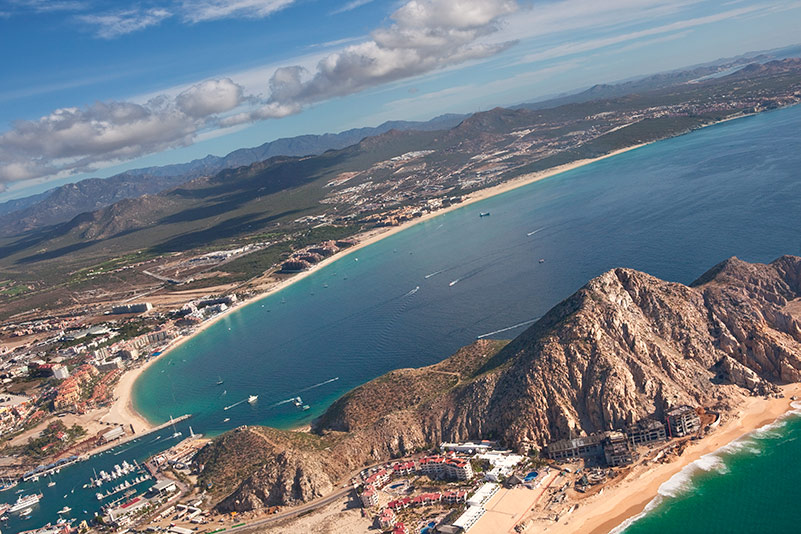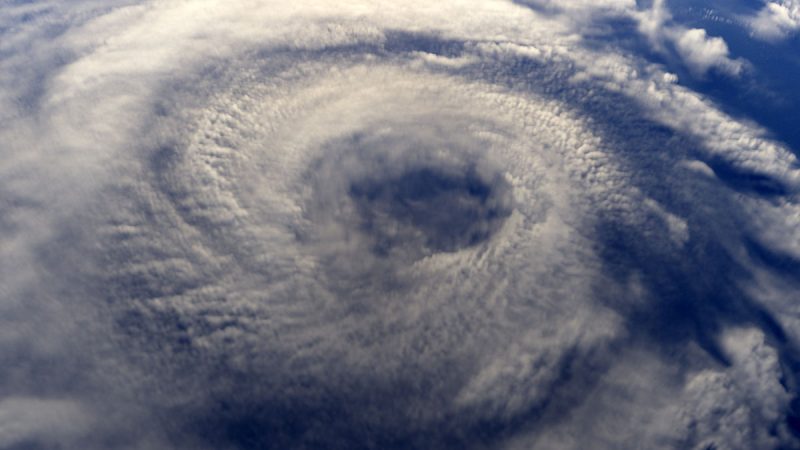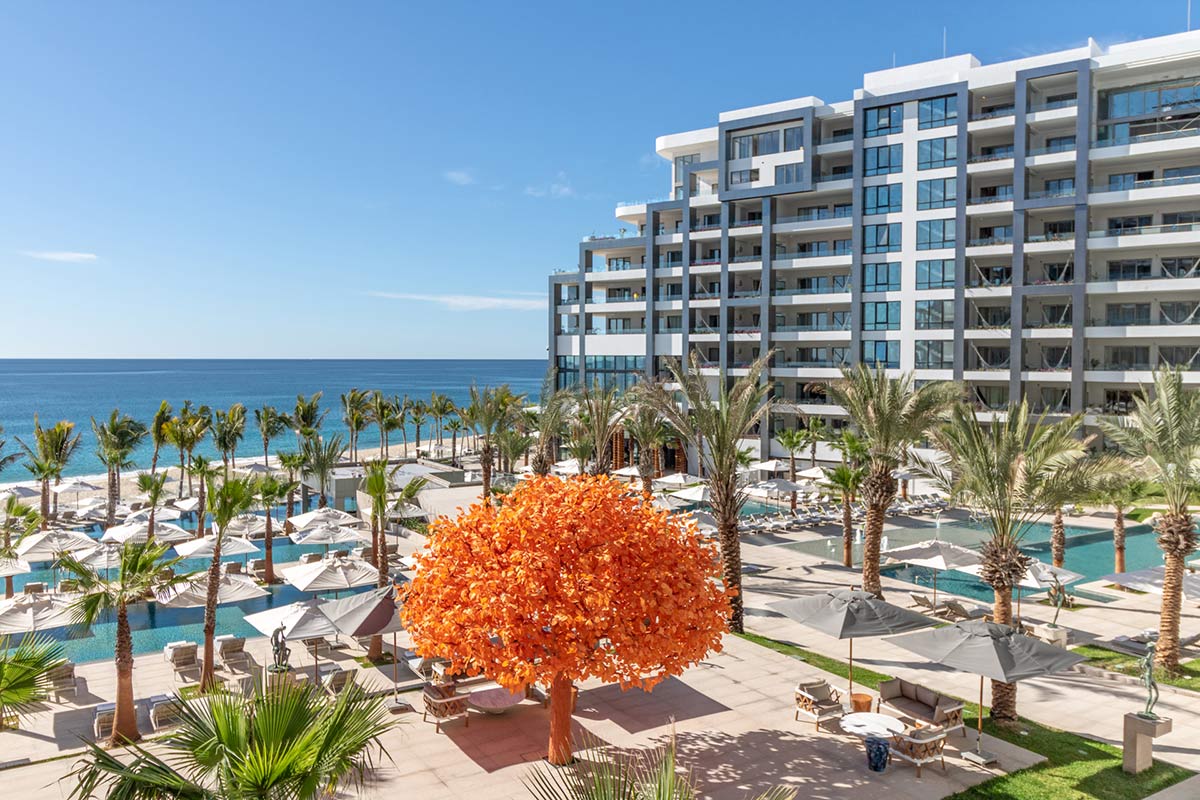Los Cabos During Huricane Season

As some of the most powerful phenomenons that occur within nature, hurricanes and tropical storms should be heeded with caution. If you are planning on taking a vacation in Mexico, though, do not let hurricane season scare you away from an escape to paradise! Los Cabos is one of the most sought-after destinations in the entire country, thanks in large part to its warm, sunny climate, and is fortunate to rarely be affected by hurricanes.
Even during hurricane season, the region is blessed with delightful weather most of the time, with the majority of the annual rainfall taking place in September. With major hurricanes seldom hitting land on the Baja Peninsula, a vacation in Los Cabos is totally within reach.
When is Hurricane Season?
Although it officially spans between the months of June and November, hurricane season in Los Cabos is most active from August through October. If it appears as though any hurricane activity will be approaching the region during your vacation, be sure to comply with what local officials are asking, which could include evacuating to areas with higher elevations. As you plan your getaway in Los Cabos during hurricane season, you may want to consider purchasing trip insurance so that you are protected should your travel plans be interrupted by storms in the region. Hurricane season does see some rain, but mostly in the form of passing showers, so that you can continue having a blast rather than waiting out a rainstorm.

Why Take a Vacation During Hurricane Season?
Los Cabos offers a gorgeous natural setting including miles of stunning beaches, making it one of the most sought-after destinations in the country. This means that during peak travel times, there are typically a lot of visitors in town. One of the perks of traveling during hurricane season is that occupancy rates at hotels are lower than the high season, allowing for a mellow getaway where you can bask in the blissfully calm atmosphere. Another benefit of booking a vacation during hurricane season is that there are often travel deals to take advantage of, from discounts to room upgrades.
Keeping Safe
Today’s meteorologists have the ability to predict and track storms more accurately thanks to the advanced technology now available to them. This greatly benefits locals and tourists alike, who have plenty of warning long before a storm could possibly affect the area. While Los Cabos has managed to stay safe from most hurricane activity, it is still extremely important to follow all instructions from officials that are put into motion to ensure everyone’s safety. In order to keep residents and visitors away from harm, mandatory evacuations are sometimes ordered. As tropical storms and hurricanes move closer to land, they can be accompanied by heavy bouts of rain and high winds, which can lead to flooding. However, when the proper precautions are taken in these situations, they become much less of a threat to safety.
2021 Pacific Hurricane Season
Pacific tropical storms and hurricanes often stay over the ocean and never make landfall. Storms that stay over the ocean can cause heavy rain in Mexico, but they are far milder than storms that actually make landfall.
So far this season, there have been 14 tropical storms and hurricanes in the Pacific, none of which have adversely affected Los Cabos.
- Andres: In the first week of May, Tropical Storm Andres organized in the Pacific Ocean and produced heavy rainfall in southwestern Mexico and caused a hailstorm in Toluca, the capital city of the state of Mexico. The storm stayed in the Pacific Ocean, never making landfall, and did not affect Los Cabos.
- Blanca: Tropical Storm Blanca was named on May 31, but stayed over the ocean and then weakened, not causing any damage.
- Carlos: Tropical Storm Carlos was named on June 12, but stayed over the ocean and fizzled out.
- Dolores: Tropical Storm Dolores was named on June 18, and made landfall over the Michoacán-Colima border and moved inland, weakening over mountainous terrain.
- Enrique: Hurricane Enrique was named as a tropical storm on June 25, upgraded to a Category 1 hurricane on June 26, and then downgraded again to a tropical storm. Enrique caused rip currents and landslides in the state of Guerrero, as well as heavy rain and wind in the state of Colima, flooding in the state of Michoacán, power outages in the state of Jalisco and uprooted trees and power outages in the state of Nayarit.
- Felicia: Hurricane Felicia was named as a tropical storm on July 14, then upgraded to a Category 1 hurricane on July 15. The storm reached its peak intensity over the Pacific Ocean on July 17 and never made landfall.
- Guillermo: Tropical Storm Guillermo was named on July 17, following a similar path behind Felicia over the Pacific Ocean. The storm remained over the ocean and there were no reports of associated damage.
- Hilda: Hurricane Hilda was named as a tropical storm on July 30, then upgraded to a hurricane on the same day. Hilda remained over the Pacific Ocean, fizzled out, and never made landfall.
- Jimena: Tropical Storm Jimena was named on August 5, remained over the Pacific Ocean, and never made landfall.
- Ignacio: Tropical Storm Ignacio was named on August 2, remained over the Pacific Ocean, and never made landfall.
- Kevin: Tropical Storm Kevin was named on August 7. It degenerated as it moved northwest over the Pacific Ocean and never made landfall.
- Linda: Hurricane Linda formed in the Gulf of Tehuantepec in southern Mexico, moving in a northwesterly direction over the Pacific Ocean until it became a named tropical storm on August 10. It was upgraded to a Category 1 hurricane on August 12, and then upgraded again to a Category 3 hurricane on the same day. The next day the storm intensified to a Category 4 hurricane, before weakening as it continued moving west farther out over the ocean towards Hawaii. Linda brought rain and tropical storm conditions to cities along the southwestern coast of Mexico and the Hawaiian Islands.
- Marty: Tropical Storm Marty was named on August 23 after the remnants of Hurricane Grace entered the Pacific and organized into a new tropical storm. Marty moved west over the Pacific Ocean and dissolved.
- Nora: Hurricane Nora formed over the Pacific Ocean in the very southern parts of Mexico, near the border with Guatemala. It was named as a tropical storm on August 26, and intensified into a Category 1 hurricane on August 28. Nora made landfall on August 28 south of Puerto Vallarta as a Category 1 hurricane. Nora caused heavy rain in the mountains outside of Puerto Vallarta, which caused the rivers to swell and overflow in the mountain towns, as well as in Puerto Vallarta. Although there was no storm surge or tsunami in Puerto Vallarta, the Cuale River, which runs through downtown Vallarta, swelled and rushed with such force that it destroyed the land along its banks, causing several homes, business buildings, and a condo building that was under construction to collapse into the river. Other rivers in the area experienced similar swelling, causing homes to collapse, and reminding the residents of Puerto Vallarta that the rivers can become more dangerous than rain, wind, or waves during a hurricane or tropical storm.
You can follow the Facebook page Pacific Hurricane Season for real time updates on all Pacific tropical storms and hurricanes, or visit 2021 Pacific Hurricane Season on Wikipedia for a summary of historical information about the storms once they’ve passed.
Hotel Measures During Hurricanes
Even though Los Cabos has been fortunate not to experience a hurricane this season, hotels in the area are still well versed in hurricane preparedness and have contingency plans in place should a hurricane hit the region.

Garza Blanca Resort & Spa Los Cabos is one of the best hotels in the area and they have a clear understanding of what their responsibilities are in the event of a hurricane or other emergency, from the first warning all the way through to evacuation, should that be necessary. The hotel was designed to be able to withstand hurricanes, so while they do have a guest evacuation plan, the likelihood of that occurring is very small. They have a team of staff trained in emergency operations and a checklist that includes removing and storing outside equipment and furniture (including beach lounge chairs and umbrellas), preparing windows, placing wall coverings at sliding door entrances, securing rooms and facilities, removing hammocks and terrace furniture on guest balconies, and closing restaurants and delivering food to guests via room service.
We hope that this article has helped to reassure you that if you are considering a visit to Los Cabos, don’t let hurricane season get in the way of a much-needed vacation. While there will be rainy days, there will also be sunny days, and lavish five-star accommodation and attentive service is waiting for you in paradise.

